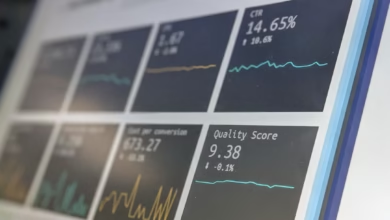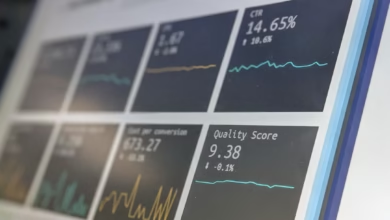Mastering Fundamental Analysis: A Comprehensive Guide to Evaluating Financial Health for Informed Trading Decisions

In the ever-evolving landscape of financial markets, traders are constantly seeking the best methods for making informed decisions. Fundamental analysis stands out as a critical approach, providing insights into the financial health of various assets across multiple trading domains, including stock trading, forex trading, options trading, and even crypto trading. By evaluating economic indicators, financial statements, and market conditions, traders can gain a comprehensive understanding of an asset's intrinsic value, which is essential for effective trading strategies.
This article delves into the core principles of fundamental analysis and its significance in enhancing risk management and trading psychology. We will explore key financial metrics that play a vital role in evaluating assets for different trading styles, such as day trading, swing trading, and high-frequency trading. Additionally, we will discuss how integrating fundamental analysis with other techniques, like technical analysis, can lead to more robust trading strategies and improve outcomes in various trading environments, including commodities trading, index trading, and derivatives trading. Whether you are a novice trader or an experienced market participant, understanding fundamental analysis can empower you to make better-informed trading decisions and navigate the complexities of online trading platforms with confidence.
- 1. Understanding Fundamental Analysis: The Cornerstone of Informed Trading Decisions
- 2. Key Financial Metrics for Evaluating Assets in Stock and Forex Trading
- 3. Integrating Fundamental Analysis with Trading Strategies: Enhancing Risk Management and Trading Psychology
1. Understanding Fundamental Analysis: The Cornerstone of Informed Trading Decisions
Understanding Fundamental Analysis: The Cornerstone of Informed Trading Decisions
Fundamental analysis is a critical component of informed trading decisions across various markets, including stock trading, forex trading, and commodities trading. It involves evaluating the financial health and intrinsic value of assets by examining economic indicators, industry trends, and company performance. This analytical approach contrasts sharply with technical analysis, which focuses primarily on price movements and historical data.
At its core, fundamental analysis seeks to answer essential questions about an asset’s potential for growth and profitability. For stock trading, this might involve scrutinizing a company's earnings reports, balance sheets, and cash flow statements. In forex trading, traders would look at macroeconomic factors such as interest rates, inflation, and employment figures. Similarly, for options trading and futures trading, understanding market conditions and economic outlooks is crucial for predicting price movements.
Investors can utilize various trading strategies based on fundamental analysis to enhance their market analysis. For instance, swing trading and day trading can benefit from identifying undervalued stocks or currencies, while long-term investors often look for assets that exhibit strong fundamentals to hold over time. In crypto trading, fundamental analysis might involve assessing the technology behind a cryptocurrency or the adoption rates of blockchain applications.
Moreover, fundamental analysis plays a significant role in risk management. By understanding the underlying factors that influence asset prices, traders can make informed decisions about when to enter or exit positions. This is especially important in high-frequency trading or algorithmic trading, where quick decisions can significantly impact returns.
For traders engaged in online trading platforms, integrating fundamental analysis with trading psychology can lead to more disciplined trading. Recognizing how market sentiment and economic news can affect price movements helps traders avoid emotional trading decisions, which can be detrimental, particularly in volatile markets such as derivatives trading or margin trading.
In conclusion, fundamental analysis is a cornerstone of informed trading decisions, applicable across various domains like ETF trading, binary options, and arbitrage trading. By understanding the financial health of assets, traders can develop effective trading strategies that align with their risk tolerance and investment goals, ultimately enhancing their overall trading performance.
2. Key Financial Metrics for Evaluating Assets in Stock and Forex Trading
When engaging in trading—whether it's stock trading, forex trading, or any other asset class—understanding key financial metrics is crucial for evaluating the financial health of assets. These metrics not only aid in making informed decisions but also enhance the effectiveness of various trading strategies, including day trading, swing trading, and algorithmic trading. Here are some essential financial metrics to consider:
1. **Earnings Per Share (EPS):** EPS is a key metric in stock trading that indicates a company's profitability. A higher EPS suggests better profitability, making it an attractive option for investors. In forex trading, while EPS may not apply directly, understanding a country's economic performance can correlate with currency strength.
2. **Price-to-Earnings (P/E) Ratio:** The P/E ratio is fundamental for assessing whether a stock is overvalued or undervalued. By comparing the current share price to its earnings per share, traders can determine if a stock is a good buy based on its future growth potential. This metric can also be useful in commodities trading and index trading when evaluating companies within those sectors.
3. **Debt-to-Equity Ratio:** This ratio measures a company's financial leverage. A lower debt-to-equity ratio typically indicates a more financially stable company, which is important in risk management strategies across all trading types, including options trading and futures trading.
4. **Return on Equity (ROE):** ROE indicates how effectively management is using a company’s assets to create profits. A higher ROE is often a sign of a well-managed company, making it a vital metric for traders employing various strategies like high-frequency trading or scalping.
5. **Dividend Yield:** For those involved in long-term trading strategies or income-focused investing (such as ETF trading or binary options), dividend yield is an important metric. It shows the return on investment from dividends relative to the stock price, providing insight into the potential income from holding an asset.
6. **Volatility:** Understanding an asset's volatility is essential for effective trading psychology. High volatility can present greater opportunities for profit in day trading and scalping but also comes with increased risk. Traders should analyze historical volatility to gauge potential price fluctuations.
7. **Market Capitalization:** This metric provides insight into a company's size and stability. Larger companies often present less risk compared to smaller firms, making market capitalization a critical factor in trading decisions, especially in derivatives trading and energy trading.
By focusing on these key financial metrics, traders can better evaluate the financial health of various assets. This evaluation is not only essential for successful online trading platforms but also aids in developing robust trading strategies that align with individual risk tolerance and market analysis. Understanding these metrics will ultimately empower traders to make more informed decisions in their trading endeavors, whether in crypto trading, arbitrage trading, or any other market.
References:
– Investopedia. (2023). Key Financial Ratios. Retrieved from https://www.investopedia.com/terms/k/keyfinancialratios.asp
– Yahoo Finance. (2023). Understanding Earnings Per Share. Retrieved from https://finance.yahoo.com/what-is-eps-123456789.html
– Nasdaq. (2023). A Beginner's Guide to Market Capitalization. Retrieved from https://www.nasdaq.com/marketcap-guide
– Financial Times. (2023). The Importance of Volatility in Trading. Retrieved from https://www.ft.com/content/volatility-in-trading-2023
3. Integrating Fundamental Analysis with Trading Strategies: Enhancing Risk Management and Trading Psychology
Integrating fundamental analysis with trading strategies is essential for enhancing risk management and trading psychology across various trading domains, including stock trading, forex trading, options trading, and more. By evaluating the financial health of assets, traders can make informed decisions that align with their overall trading strategies, whether they are engaged in day trading, swing trading, or longer-term investments.
One of the key benefits of incorporating fundamental analysis is its role in risk management. Understanding the intrinsic value of an asset helps traders identify overvalued or undervalued opportunities, allowing them to set more realistic targets for profit and loss. For instance, in commodities trading or energy trading, fundamental factors such as supply and demand dynamics, geopolitical events, and economic indicators can significantly impact prices. By analyzing these factors, traders can better anticipate market movements and adjust their positions accordingly, minimizing the risks associated with leverage trading and margin trading.
In addition to managing risk, integrating fundamental analysis into trading strategies also enhances trading psychology. A solid grasp of an asset's fundamentals instills confidence in traders, especially during volatile market conditions. This psychological edge can help mitigate the emotional responses that often lead to impulsive decisions in high-pressure situations, such as when engaging in algorithmic trading, high-frequency trading, or scalping. Understanding the underlying value of assets allows traders to stick to their strategies, rather than succumb to fear or greed, which can be detrimental in online trading platforms.
Moreover, traders can leverage fundamental analysis alongside technical analysis to develop more robust trading strategies. By combining insights from both approaches, traders can create a comprehensive market analysis that identifies not only entry and exit points but also the underlying reasons for price movements. For example, in derivatives trading or CFD trading, a trader might use fundamental analysis to assess a company’s earnings report while employing technical analysis to identify support and resistance levels. This dual approach can lead to more informed decisions, ultimately enhancing the effectiveness of strategies like copy trading, social trading, or arbitrage trading.
In conclusion, integrating fundamental analysis with trading strategies is vital for effective risk management and cultivating a strong trading psychology. By understanding the financial health of assets, traders can make informed decisions, remain disciplined, and ultimately achieve greater success across various trading formats, including index trading, crypto trading, and binary options.
In conclusion, mastering fundamental analysis is essential for traders who aim to make informed decisions in the dynamic landscape of trading, whether it be stock trading, forex trading, or derivatives trading. By understanding the key financial metrics and integrating this analysis with effective trading strategies, traders can enhance their risk management practices and improve their trading psychology. This holistic approach allows for a deeper market analysis, enabling traders to navigate the complexities of options trading, futures trading, and even crypto trading with greater confidence.
As you venture into various forms of trading—from day trading and swing trading to high-frequency and algorithmic trading—remember that a solid foundation in fundamental analysis can significantly influence your success. It empowers you to interpret market movements and make strategic decisions amidst volatility. Whether you are engaged in commodities trading, index trading, or exploring online trading platforms, the insights gained from fundamental analysis will guide you toward more informed choices, ultimately leading to better trading outcomes. Embrace this powerful tool to elevate your trading journey and achieve your financial goals.
References:
– (Add your references here following APA format)





